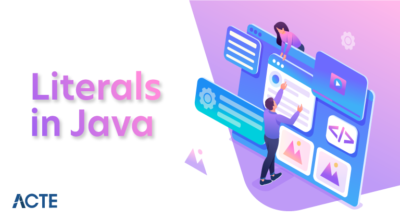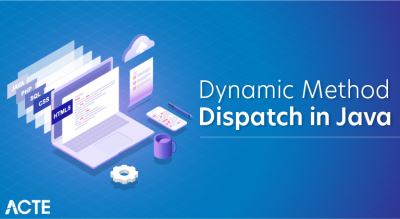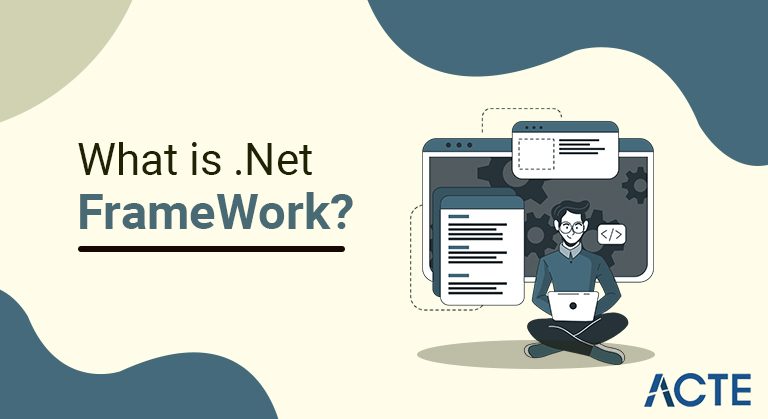
Net Framework is a software development platform developed by Microsoft for building and running Windows applications. The . Net framework consists of developer tools, programming languages, and libraries to build desktop and web applications. It is also used to build websites, web services, and games.
- Introduction to .net Framework
- .Net Framework Architecture
- Features of .net Framework
- .Net Framework Design Principle
- Alternative implementations
- Is .NET application platform dependent or platform independent?
- Reasons Why You Should Choose Microsoft .Net Framework
- How Developers can Use .Net Framework
- Benefits of .net framework
- Conclusion
Introduction to .net Framework:
The .Net Framework could also be a code package development platform developed by Microsoft for creating and operational Windows applications. The .Net framework contains developer tools, programming languages, and desktop building libraries and web applications. it’s to boot accustomed build websites, web resources, and games. The .Net framework was meant to create applications that are in a position to run on Windows Platform. The first version of the .Net framework was released in 2002. This version was called .Net framework one.0. The Microsoft .Net framework has come AN extended methodology since then, and additionally the present version is .Net Framework four.7.2.
The Microsoft .Net framework is going to be accustomed to manufacture every – Form-based and web-based applications. web services will even be upgraded to the .Net framework. The framework to boot supports various programming languages such as Visual Basic and C #. so developers can take and select the language to develop the required application. throughout this chapter, you will learn variety of the basics of the .Net framework.
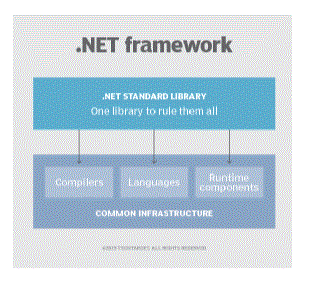
- “Common Language Infrastructure” or interface may be a platform for .Net design wherever .Net programs are unit used.
- CLI has the subsequent key features:
- Different Management – completely different errors occur once a missive of invitation is formed.
- When an application tries to open a file on an area machine, however, the file doesn’t exist.
- When an application tries to transfer sure records to a website, however, the affiliation to the website is invalid.
- Garbage Collection – trash pickup is the method of removing unwanted resources once they are no longer required.
- The .NET Framework includes a group of ordinary schoolroom libraries. A schoolroom library may be an assortment of ways and functions which will be used for a selected purpose.
- For example, there’s a schoolroom library that has ways in which to handle all file-level tasks. Thus there’s a way to scan the text in an exceedingly large file. Similarly, there’s how to put in writing text in an exceedingly file. Many ways are categorized into Systems. * Or Microsoft. * Word areas. (Star * merely suggests that regard to all routes that be the System or Microsoft namespace)
- A namespace may be a logical division of the way. we are going to learn additional concerning these word places within the following chapters.
- WinForms – this can be wont to develop Form-based applications, which may run on the tip user’s machine. tablet is AN example of a client-based application.
- ASP.Net – this can be wont to develop web-based applications, that area unit designed to run on any browser like net someone, Chrome or Firefox.
- The web applications are processed on a server, which is able to put in net info services.
.Net Framework Architecture:
.Net Framework design may be a .Net platform redaction model that has an operating setting and integration with a spread of programming languages for straightforward development and implementation of assorted Windows and desktop applications. Contains schoolroom libraries and reusable sections.
The design of the .Net framework relies on the subsequent key components;
1. The operating time of a typical language
Examples of variations are:
2. category Library
3. Languages
The types of applications which will be designed into the .Net framework area unit any categorized into the subsequent classes.
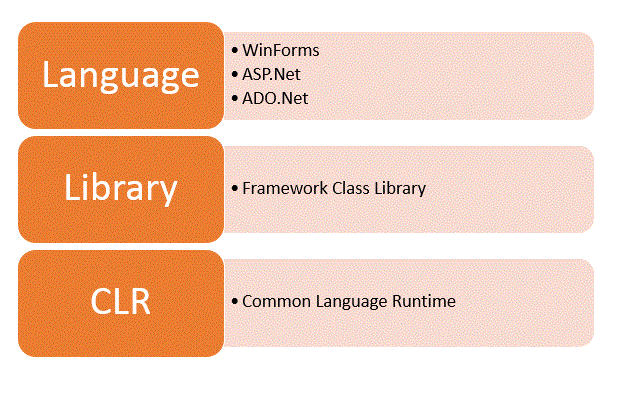
Features of .net Framework:
1. General Conditions of Conduct: –
All internet applications run beneath an equivalent in operation atmosphere, referred to as customary Language in operation Time. CLR facilitates interaction between totally different internet languages such as C #, Visual Basic, Visual C ++, etc. by providing a typical supply of written code in any of those languages.
2. General kind System: –
The .NET framework follows the kinds of information integrity systems across all coded programming languages that befits the internet. CTS ensures that program things written in numerous programming languages can communicate to share information.
3. multilingual support: –
NET provides multilingual support by managing the links wont to translate the supply into intermediate (IL) and from IL to native code, and enforce system security and security.
4. Tool support: –
CLR works collaboratively with tools like visual studio, connectors, debugging, and profiles to make the work of the developer a lot easier.
5. Security: –
CLR controls the safety of the system through user identity and code related to the authorization check. The identity of the code is anonymous and therefore the permission to use the services properly. This kind of protection may be a major feature of .NET. The .NET framework additionally provides field-based security support for windows non governmental organization and cluster accounts.
6. Automatic Service Management: –
.NET CLR provides economical and automatic service management like memory, screen area, network affiliation, website, etc. CLR requests numerous structured functions of the .NET framework to share and extract memory for .NET objects. Therefore, program planners don’t have to write a code to expressly offer and separate memory from the system.
7. straightforward and made error correction support: –
.NET IDE (integrated development site) provides straightforward and made debugging support. If a variance happens throughout operation, the system stops and therefore the IDE marks the road containing the error and details of that error and attainable solutions. The in operation time additionally provides inbuilt stack walkways that makes it horribly straightforward to search out bugs and bugs.
8. Simplified development: –
By putting in or uninstalling .NET, a window-based application may be a matter of repetition or deleting files. This could be as a result of internet elements aren’t laid out in the register.
9. information category library: –
The .NET framework category (FCL) library contains an upscale assortment of categories offered for developers to use these categories with code Microsoft has developed these categories to accomplish a range of application functions, like file process and alternative information storage. , playacting input output functions, internet services, information access, and graphics.
10. Suffering: –
The application designed on the .NET website is transportable. Once the ASCII text file for the CLR compliant programming language compiles, it generates freelance code for the machine and therefore the medium. This was erst called Microsoft Intermediate Language (MSIL) and has currently been renamed as a typical Intermediate Language (CIL). CIL is the key to movability in .NET.
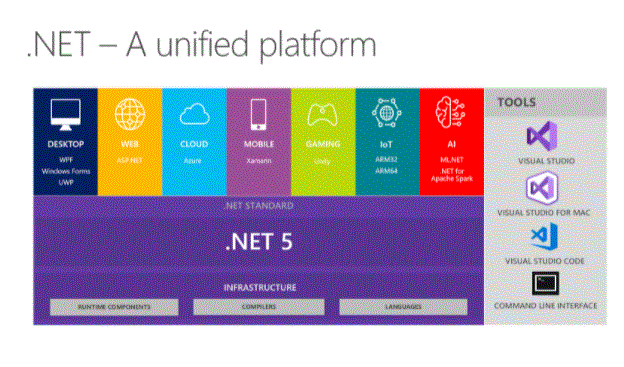
.Net Framework Design Principle:
Now in this .Net Architecture course, we will learn the design principles of the .Net framework. The following design rules for the .Net framework are what make it best to create Net-based applications.
1) Collaboration – The .Net framework provides a lot of back-up support. Suppose you have an app built on an older version of the .Net framework, it says 2.0. And if you have tried to use the same program on a machine with a higher version of the .Net framework, it says 3.5. The request will still work. This is because with every release, Microsoft ensures that older versions are compatible with the latest version.
2) Portability – Applications built into the .Net framework can be customized on any Windows platform. And now, in more recent times, Microsoft is also looking to make Microsoft products work on other platforms, such as iOS and Linux.
3) Security – The .NET Framework has excellent security features. The built-in protection system assists in both authentication and authentication of applications. Every app can clearly define its security mode. Each security method is used to give the user access to the code or operating system.
4) Memory management – The working time of Common Language does all the work or memory management. The .Net framework has all the capabilities to detect those resources, which can be used by an operating system. Then it will release those resources properly. This is done through a program called “Dirt Collector” which works as part of the .Net framework. The garbage collector works periodically and keeps track of which system resources can be used, and releases them accordingly.
5) Simplified deployment – The .Net framework also has tools, which can be used to package applications built into the .Net framework. These packages can then be distributed to customers’ machines. Packages will automatically install the application.
- The .NET Micro Framework is a .NET platform for devices with over-restricted resources. It incorporates a smaller version of CLR and supports improvements to C # (although some developers are able to use VB.NET, [41] despite the number of robberies, limited functionality) and debugging (on the screen or hardware), both use Microsoft Visual Studio. It also includes a subset of the .NET Framework Class Library (approximately 70 classrooms with approximately 420 methods), a WPF-based free GUI framework, and additional libraries dedicated to embedded applications.
- Mono is an implementation of CLI and FCL, and offers additional functions. Licensed as free software under MIT license. Includes support for ASP.NET, ADO.NET, and Windows Forms libraries for a wide range of properties and applications. It also includes C # and VB.NET mergers.
- Portable.NET (part of DotGNU) offers the implementation of CLI, FCL components, and C # compiler. Supports a variety of CPUs and applications. The project was halted, with the final stable release in 2009.
- Microsoft Shared Source Common Language Infrastructure is a free use of CLR. However, the latest version only works on Windows XP SP2, and it has not been updated since 2006. Thus, it does not contain all the features of version 2.0 of the .NET Framework.
Alternative implementations:
The .NET Framework was an outstanding implementation of .NET technologies, until the release of .NET. Other implementation parts of the framework are. Although the operating time engine is defined by ECMA-ISO specification, some of its use may be burdened with copyright issues; ISO standards may include the exclusionary clause, “Attention is drawn to the fact that some aspects of this document may be subject to copyright. ISO will not be responsible for identifying any or all of these patents.” [40] It is difficult to develop alternatives. FCLs, which are not defined at the open level and may be subject to copyright restrictions. Also, FCL components have Windows-specific functions and behaviors, so implementation in non-Windows forums can be problematic.
Some different uses of the frame components are listed here.
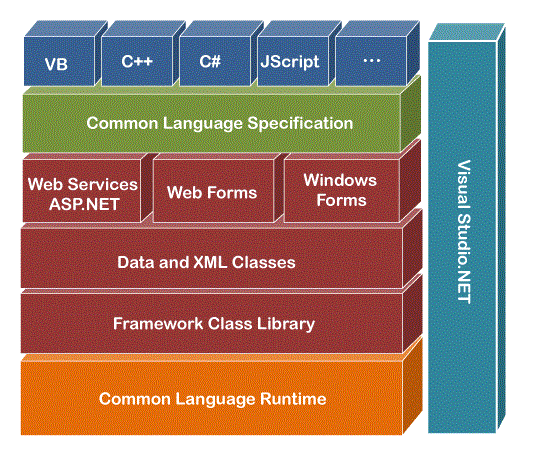
- The combination of Operating System Architecture and CPU Architecture is known as a platform. Field dependence means that the programming language code will only apply to a specific Application. The .NET application depends on the platform due to the .NET framework that can only work on a Windows-based operating system. The .Net application is also independent due to the Mono framework. By using the Mono framework the .Net system can work on any operating system including windows. Mono framework is a third party software developed by Novell Company which is now part of the Micro Focus Company. It is a paid framework.
- Visual Studio is a development tool used to design and develop .NET applications. By using Visual Studio, the user must first install a .NET framework in the system. In an older version of Windows OS such as XP SP1, SP2, or SP3, the .NET framework was integrated with the installation media.
- Windows 8, 8.1, or 10 does not offer a pre-installed version of 3.5 or later .NET Framework. Therefore, a version higher than 3.5 should be installed from Windows installation media or online if needed. The Windows update will provide recommendations for installing the .NET framework.
Is .NET application platform dependent or platform independent?
Reasons Why You Should Choose Microsoft .Net Framework:
Microsoft .NET is one of the best platforms for building robust, secure, and flexible web or desktop applications. Used by most Fortune 500 companies, Microsoft .NET is best known for its great applications. Microsoft .NET offers many benefits to both developers and end-users. While customers find fully functional and rich applications with an in-depth user experience, developers and designers find flexibility and flexibility in building websites easily and simply.
Better UI controls
Microsoft .NET forum provides rich user controls (UI). Not only does it have a rich set of built-in UI controls, but it also supports the UI controls of third-party companies such as Telerik. Telerik offers features such as drag and drop, which facilitates minimal development time with in-depth user experience as well as improved visual effects and user interaction.
Security
The .NET framework provides a very secure environment. It uses various security measures to keep the application secure. It has Windows built-in authentication, which can be used to make secure and secure applications. It also has cryptography classes to secure data encryption / encryption.
Integration with other Microsoft applications
.NET easily integrates with other Microsoft products, makes it easier to communicate with exchange servers, emails, Lync messenger, and Microsoft Office applications, and retrieve data with a single login. Whether by email exchange, internal communication, document management, or collaboration, one can create an entire office with Microsoft automatically.
- Install the .NET Framework version of your operating system. The latest version to produce the .NET Framework 4.6.1. There are additional NET Framework packages released outside the band. For information on these packages, see the .NET Framework and Out-of-Band releases.
- Choose the .NET Framework language or languages that you will use to improve your applications. Several languages are available, including Visual Basic, C #, Visual F #, and C ++ from Microsoft. (The programming language that allows you to improve .NET Framework applications complies with the standard Language Infrastructure (CLI) specifications.) For a list of available editing languages, see Visual Studio Languages.
- Select and install the development area that you will use to create your applications and support your preferred programming language or languages. Microsoft’s integrated development platform for NET Framework applications is Visual Studio. Available at a number of retail and free programs.
How Developers can Use .Net Framework:
If you are an engineer, you can choose any programming language that supports the .NET Framework to create your application. Because the .NET Framework provides language independence and interaction, you can interact with other .NET Framework applications and components regardless of the language in which they are built.
To upgrade your .NET Framework applications or components, do the following:
Benefits of .net framework:
There are a number of benefits offered by the.Net framework, some of which are listed below.
Memory Management:- In many programming languages, programmers are responsible for sharing and releasing memory and managing the life of an object. For NET Framework applications, CLR provides these services instead of an application.
Standard Type System:- In traditional planning languages, the basic types are defined by the coordinator, making it difficult to integrate different languages. In .NET Framework, the basic types are defined by the .NET Framework system and are common in all languages that direct the .NET Framework.
Extensive Class Library:- Instead of writing large amounts of code to manage common low-level tasks, editors can use the easily accessible library of genres and their members from the .NET Framework Class Library.
Language interaction:- The language coordinators who direct the .NET Framework issue a central code called the Common Intermediate Language (CIL), which is compiled during the implementation of the common language. With this feature, single-language methods are available in other languages, and editors can focus on creating applications in their preferred language or languages.
Version Conformity:- With unusual exceptions, applications developed using a specific version of the .NET Framework can work without modification in the latest version.
Side effects:- The .NET Framework helps to resolve translation disputes by allowing multiple versions of common language operating time to be available on the same computer. This means that most versions of the applications can also stay together, and that the app can work on the .NET Framework version it is built on.
Multitargeting- By pointing to the .NET Framework Portable Class Library, developers can create assemblies that work on multiple NET Framework platforms, such as Windows 7, Windows 8, Windows 8.1, Windows 10, Windows Phone, and Xbox 360.
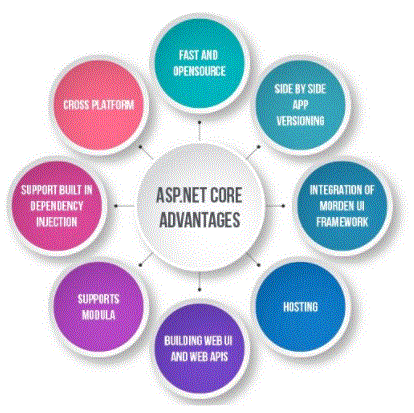
- .Net is a programming language developed by Microsoft. Designed to build applications that can run on the Windows platform.
- .Net programming language can be used to improve Form-based applications, web-based applications, and Web services.
- Developers can choose from a variety of programming languages available in the Microsoft .Net framework platform. The most common are VB.Net and C #.
Conclusion:

